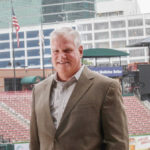If you’ve seen at least one Cirque du Soleil show, then you know this is not your grandfather’s circus. In fact, thinking about shows like Love and O, one might even forget to use the word circus when attempting to describe them. So with such a differentiated product, you might think marketing could take a back seat and indeed this was the case for many years. But with competition rising, Cirque has had to up its game on the marketing front, adding talent like Alma Derricks, VP Sales and Marketing of Cirque’s Resident Shows Division.
In our extensive interview below, Alma shares some of the challenges she faced at Cirque, differentiating a portfolio of eight shows in Las Vegas, rebranding one of the shows, creating new customer experiences and even establishing a new line of business entirely. It is little wonder that Alma garnered the Customer Experience Award from The CMO Club. Read on to discover the high wire act of the modern marketer.
Drew: How did you end up at Cirque Du Soleil?
Alma: The circus sort of finds you, Drew. I can’t say that 10 years ago this was on my roadmap. It appeared as an opportunity. One of the throughlines in my career is that I run towards moments of inflection and Cirque, with its new private equity ownership, was definitely at one of those points when I joined last July. I love getting to ask questions, top to bottom, without any regard for how things have always been done. And that’s what I walked into.
Drew: So let’s talk about the Resident Shows Division at Cirque de Soleil.
Alma: There are two major divisions at Cirque de Soleil. There’s the Residents Shows Division which oversees shows that are nailed down including our eight shows in Las Vegas and Orlando. We also have another team, the Touring Shows Division, that oversees shows that move around in the big top tent or tour in arenas.
Drew: That’s a lot of shows and seats to fill.
Alma: In Las Vegas, we sell as many as 20,000 tickets a night. It’s a lot of inventory in a very, very busy town. My job is all about keeping our shows top of mind. For us, that’s usually an interesting continuum. Because we’re based in resorts, it’s not likely that you’ll see one of our shows more than once a year so, it’s important to stay in your peripheral vision. Once the decision is made to visit Las Vegas or Orlando, it’s really important that for us to break through the noise and remind you that we’re the most exciting thing that you can do in the evening. Cirque is over 30 years old. For the mass majority of those years, Cirque grew organically because it was new, different and dazzling. For example, a show like O, which is our flagship show at the Bellagio in Las Vegas, was sold out for two years when it opened. Marketing thinking is a relatively new thing for Cirque but incredibly important now that we’re not the newest kid on the block.
Drew: So what now?
Alma: Now, we’re in a different stage of life because we’re more established and face a lot of different challenges in the market. Vegas has gone through a number of reinventions over the past 30 years. Today, there’s a brand new 17,000 seat arena that hosts major concerts and will soon be home to a new hockey team. Special event residencies like JLo, Britney and Celine have emerged as an important part of the competitive landscape. So we have to keep reinventing ourselves in a space that, as you know from visiting Vegas, is a really busy place. We have to always make the loudest noise in that environment and make sure that visitors are still aware that we’re around, that we’re exciting and that we’re vital.
Drew: Must be a challenge from a portfolio management standpoint, right? Do people go to see a Cirque show or a specific show?
Alma: It’s a great question. What you’re hitting on is something really particular to Las Vegas because we have so many resident shows in one place. I’m always troubled when customers say that they don’t understand the differences between our shows. Some people think that there’s ‘O’, which stands out as “the water show”, and maybe one other production. One of the real challenges we have is needing to flip the brand script in Vegas and emphasize the show ahead of the Cirque brand. We need explain the differences between these shows. They all have very, very different personalities. And the thing that I’ve been working on quite a bit is, how do you communicate that each show is the only show you have to see.
Drew: Interesting. So how does this play out in places like social media?
Alma: I think one of the next new frontiers for Cirque is allowing customers behind the curtain a little bit more. It’s something that our founder was very, very cautious about in the early days of social media. But the world has changed and the expectation that an audience has about peeking behind that curtain is something we can’t put back in the bottle. So we’re trying to find ways to facilitate that via social media and social content and by creating events in Las Vegas that are complete behind the curtain experiences.
Drew: What would you look at now so far and say that oh, I’m really proud of this from a marketing standpoint that we were able to get this done and you been a relatively short period of time?
Alma: From a marketing standpoint, I think our highest profile achievement was actually rebranding our show The Beatles LOVE. I didn’t completely understand until we were well into the process that Cirque has never rebranded an existing show. For the tenth anniversary, we made quite a few changes to the show, the music, the technology and the visual identity. It was really interesting to rethink the entire way we were approaching getting that messaging out. I’m proud that we got through it and succeeded at so well.
Drew: What else?
Alma: I’m also really excited about offerings that give customers behind the scenes access. We’ve actually created an entire line of business called SPARK that serves as a learning laboratory for corporate teams. We provide business training, team building and will even create a customized curriculum. We’ve hosted companies like Adobe and Google onto the stage and into our training spaces so they can interact with our performers and production teams. It’s both an amazing bucket list moment and a chance to really learn about trust, team building, operational excellence and customer service in a very tangible way.
Drew: Very cool. I love the fact that as a marketing person you were so involved in creating a new revenue stream.
Alma: Thanks. Part of the process that I go through when I’m new to an organization, especially when I’m tasked with being a change agent, is to seek out these kinds of opportunities. I love the fact that we are able to build SPARK by leveraging our core business, our custom theatres, our performers, and our production teams. It’s taking off like a rocket, and has not only created a new way access the brand but also makes a strong statement about who we are.
Drew: By the way, I saw LOVE twice many moons ago. There you dealt with the common marketing challenge of taking a beloved brand and refreshing it.
Alma: True. With the refresh, especially if you are a Beatles fan, we’ve given you a new reason to see it again. We also recognized that technology changes and improves a lot in 10 years. Cirque has always taken pride in its fusion of technology and artistry so it seemed very natural as the tenth anniversary approached to rethink the staging, effects, and imagery. The original show was very nostalgic. Today it’s more colorful and, at the same time, showcases the fact that The Beatles are as relevant today as they were in the 60s.
Drew: Let’s talk metrics. Which ones matter?
Alma: Ticket sales are, of course, number one. Put that one in bold! But we also think about how our performers are evolving as creators and artists. Many artists like contortionists have a relatively short performing career. We are always thinking about what else interests them and how we can involve them in other ways with things like quasi-internships in marketing or sales. It’s an unusual thing but we’ve failed if we haven’t taken that into consideration along with our other marketing activities.
Drew: Do you have some advice for fellow marketers as they look ahead to 2017?
Alma: The first thing that comes to mind is proportionality. Just because the world is talking about spending more and more on digital doesn’t mean that it’s right for your business. For us, the real battle begins once a visitor to Vegas sets foot on the ground at the airport or drives into town. So, things like taxi toppers, building wraps, marquees and all those great out-of -home things will never stop being a priority in our marketing mix. It’s not about being modern or not, it’s about knowing your audience and understanding your context.
Drew: Totally agree. I’ve talked to a couple of CMOs that have pulled back their digital spend of late because it wasn’t performing as well as a mix with more TV. Do you have a recommend don’t for 2017?
Alma: Don’t get too absorbed by chasing big data, especially if it’s not relevant to you. Don’t let the pursuit of big data cause you to lose sight of the importance of instinct and intuition. It’s still the hallmark of what we do as marketers. You still have to have a gut instinct. Big data becomes a fantastic tool but, at the end of the day, you still have to know your products intimately and you still have to recognize a great idea even if you don’t have stacks of information to go on.

 With the Empire State Building glowing in the background, I wondered what was on my own horizon that evening. The cocktail party in a chic midtown hotel had just begun, the award-winning CMOs were pouring in and my curiosity was starting to peak. Who were these people? Sure I could read their name badges but what were their stories and more importantly, would I have time to discover them in between the chit chat?
With the Empire State Building glowing in the background, I wondered what was on my own horizon that evening. The cocktail party in a chic midtown hotel had just begun, the award-winning CMOs were pouring in and my curiosity was starting to peak. Who were these people? Sure I could read their name badges but what were their stories and more importantly, would I have time to discover them in between the chit chat?
